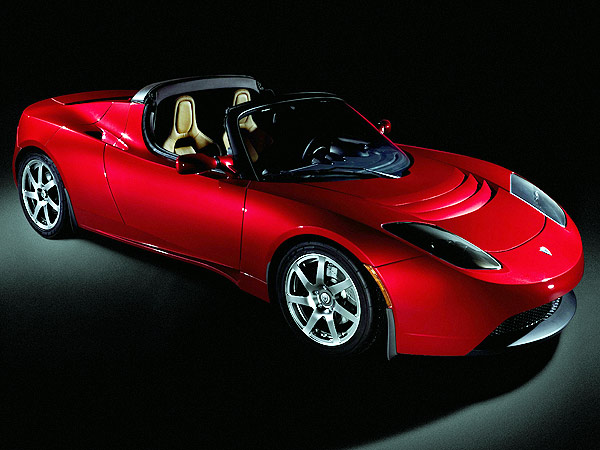Last week, In Paris UN climate conference 2015, India pledged to increase the amount of solar power that can be generated in the country to 100 gigawatts by 2022.
The same week, I got my LEED AP certification, so knowing all about India, I decided to write this article - to tell the reality of India.
100 GW of Solar power!
This is REALLY BIG promise, considering the fact that today, India's current capacity is just around 3 GW! That's more than 20 times India's current solar deployment. It's also more than twice the installed capacity in Germany & China. Germany has about 40 GW. China is little more than 40GW.
To achieve 100 GW, India will have to overcome some of the biggest challenges in terms of Investments and most importantly policy reforms.
To get to 100 GW by 2022, Solar Power installations must grow by 65% year-on-year!
Can India pull it off?
Technically and Financially, getting to 100 GW by 2022 is feasible. The total investment needed in Solar Panels (not including land and investments in Power Grid) is about US$ 75 Billion. (Assuming cost of panels will come down by 5% y-o-y.) Total area required for 100 GW will be around 30,000 acres.
Considering that India has plenty of funds - mainly in form of black money, and according to GFI's 2014 Annual Global Update on Illicit Financial Flows report, US $51 Billion flows out of India annually and in last 10 years US $ 439 Billion flowed out of India.
We can make a reasonable assumption that given proper channels and opportunities, all that black money can be diverted to create solar power plants. Then we know we have funds to set up 100 GW of solar power!
Between 2012 and 2014, solar capacity increased from 461 megawatts to over three gigawatts in India.
Land needed to set up the panels is not much either. 100 GW will require about 500,000 Acres. Just by using the large reservoir area of big dams of India - like Nagarjuna Sagar, Tehri dam, Bhakra Dam etc, we can create more than enough space for solar power plans. So even after considering the fact that cost of building solar farms over lake area is slightly expensive - but it makes up the fact that the Solar plants does not need agricultural land!
Moreover, setting up solar power plans over water reservoirs helps in reducing water losses due to evaporation and also increases the efficiency of Solar PV panels.
In short, we have all the land needed to create 100 GW of Solar power, and we have the funds. But do we have the right policies?
Great Indian Dinosaur Park!
Just take a walk around any Indian cities and look out for power distribution cables. It often looks like this:
The image is also a perfect reflection on the state of Indian power distribution utilities. None of the utilities have performed regular auditing of their power losses and it shows in their balance sheets.
Currently, power supply distribution is a monopoly of several state government owned companies - popularly called as "escoms". These escoms are badly managed, corruption ridden organizations - which have no business sense. These utilities have racked up $55 billion in losses over the past six years, the cumulative losses in these power utilities has not yet been fully accounted.
Development of Solar Power by private sector will only aggravate losses to state owned power utilities. Currently, farmers in most states do not pay for electrical power. Indian farmers who get free electricity to power irrigation pumps.
The free power to farmers accounts for 20 percent of India's electricity consumption and accounts for roughly $10 billion of the losses on state owned utilities. Consequently, industries in India are charged at very high price for electric power and if these industrial users move to solar power, the losses to state owned electric utilities will only increase. Therefore state owned electric utilities have no motivation to allow "net metering".
The national power grid is also a government owned monopoly of Power Grid Corporation of India - which is yet another dinosaur!
The power grid is already under tremendous stress, and the installed grid capacity is less than generation capacity. As a result power hungry states in the southern parts of the country are not able to draw power from states which has surplus capacities.
Adding 100 GW to this decrepit grid is not possible. Also one must note that peak solar power is available only for a short duration of the day and it completely disappears at night. This massive power fluctuations can disrupt & destabilize the grid adversely.
The intermittent nature of renewable energy sources like solar power presents a range of challenges to utilities, depending on their grid's size and design. If Solar PV cells are providing a substantial share of the grid's power and suddenly cloud covers a large Solar PV plant, the power generation drops by 40-50% in less than a minute. This rapid power loss can cause the frequency of the grid's alternating current to drop well below 50 hertz, damaging customer equipment or even causing a blackout.
In short, Indian utilities' ragged infrastructure and financial woes have deterred investment in both clean and unclean power generation. In many cases, utilities have no money to buy solar power from private plants - even when there is demand for electric power.
The Great Indian Policy Challenge
A. Policy Challenge-1: Power Utilities
The biggest challenge India to developing solar power is its policy framework. The onus of connecting all of the 100 GW of solar power lies with various state power utilities - who have absolutely no incentive to do so.
As a solution, Messrs. Sivaram, Shrimali and Reicher suggest creating a federally administered fund to buy power from solar generators when distribution companies aren't in a position to do so, thereby reducing risks to developers. Such a fund was outlined as part of a 2010 national solar program. Even after 5 years - the policy is not yet implemented.
Today, not all Indian states currently have mechanisms for customers to sell self-generated solar power back to the grid and it is unlikely that the various state governments will change their policies to align with the fedral/central government vision and policy.
B. Policy Challenge-2: Land acquisition
Today, setting up a 1 GW of solar power requires 230 acres of land. For 100 GW, it will require 500,000 acres which investors will have to acquire without government assistance. Given the fragmented land ownership in India, it means negotiating with 30-50 persons per acre of land! Moreover there are innumerable restrictions on acquiring agricultural land.
Further more, land area needed for the solar power plans are under the control of various state governmental agencies: Ministry of agriculture, Ministry of Irrigation etc. In short there are more than 100 agencies that govern the area!
This implies that private developed developers will face difficulties acquiring land and getting permissions to build the necessary transmission lines.
C. Policy Challenge-3: Pricing Challenge
For any business investments, investors must have a clear idea of expected returns. Given the rapid decline in the cost of solar power generation - the cost of solar power has already fallen beneath the cost of power generated from imported coal, and could soon be cheaper than power from domestic coal.
This rapid drop in solar PV panels will create project financing challenges. So apart from a purchase agreement, the solar power plants will need tax benefits and capital grants. A currency-hedging facility would help to attract foreign capital.
In rural areas, Indian government also subsidizes fuel for gas lamps, making solar even more uncompetitive. Reducing fossil fuel subsidies would lift energy prices that this would make rooftop solar plants more attractive for millions of rural households.
D. Policy Challenge-4: Petty Politics
As a first step in policy reforms, government will have to revive & pass the long-pending Renewable Energy Bill in 2015 or latest by summer of 2016. This Bill, if ratified by Parliament into an Act, should increase RPOs to 15 percent and provide routes for financing, such as infrastructure funds and green energy bonds.
NDA led central government has so far failed miserably to pass any major bills in parliament. The NDA government has so far shown no political will to pass even minor bills in the parliament. Currently, the government is struggling to pass the GST bill - for which there is a general consensus!
In India, power utilities are owned by local state governments. Given the petty politics that our leaders engage in, there is no chance that all the states will agree with the central/fedral government on solar/green power policies and agree on a national level green policy.
This implies, hitting the target of 100 gigawatts of solar by 2022 will require more fundamental reform in every aspect of power sector and that needs political consensus. This is the biggest challenge India has.
Policy Challenge-5: Roof Top Off Grid solar Power
If there is one good success story in solar power in India, it is in rooftop solar water heaters. India has the largest install base for roof top solar water heaters. Rooftop solar water heaters has been one of the rare successes. Ministry of New and Renewable Energy has been able to provide subsidy to individual buyers and encourage manufactures.
However, when it comes to rooftop solar PV cells, the plan is to generate only 3 GW of power via rooftop solar PV plants. Solar panels and batteries for powering appliances in a single homes or a small group of users, stand to bring enormous benefits to millions of in India who have limited or no access to the electricity grid.
As on today, rooftop solar power can now match or beat the grid rates for commercial and industrial consumers in many states. Unfortunately, very few of these people can afford to setup even the simplest solar technology and there are no easy financing options.
In rural areas, Indian government also subsidizes fuel for gas lamps, making solar even more uncompetitive. Reducing fossil fuel subsidies would lift energy prices that this would make rooftop solar plants more attractive for millions of rural households.
In India there is potential to produce upto 40 GW of power from rooftop installations and having a good policy framework to attract individual house owners to invest in solar PV panels will be a good step - but the current policies are not aligned for this.
Closing Thoughts
Producing 100 GW of solar power requires political commitment and lots of smart interventions. Government needs to increase its spending on power infrastructure which includes national power grids, power exchanges and spot power markets.
To reach 100 GW of Solar power by 2022 requires making solar power a national priority - something akin to Kennedy's race to the moon.
Right now, 100 GW of solar power looks like a pipe dream - an overambitious target that has no detailed plans and allocated budget. There is a big mismatch between the goal and the road map and there is no clear strategy to achieve it.
Technically, India is capable of setting up more than 500 GW of solar power in next 10 years - provided there is political will and policies to support it.
With the 100 GW announcement, Narendra Modi's government got the whole world excited and talking about it. If the government can follow it up with policies, investors will follow with their money, set up manufacturing plants and creating thousands of jobs.
India's push towards renewable energy has a lot going for it. It is like a mythological story in many ways. We now need to take a pragmatic view of this story and ensure that the 100 GW plan goes beyond just the talk.









